The best braided USB-C cables don’t tangle and are more durable than rubber.
Braided USB-C cables have a few benefits over their rubber brethren. They don’t tangle as easily, they’re a bit more durable, and they look nicer than the typical black rubber you see on most cables. They’re not great everywhere. For example, some braided mice cables can get caught on fabric mouse pads and cause annoyance. Otherwise, braided cables aren’t a bad way to go when it comes to material choice.
The type of USB-C cable matters as well. There are a lot of them, including Thunderbolt 3 and 4, charging cables for USB Power Delivery, and cables that connect to other types of ports. With the EU Commission forcing Apple to adopt USB-C for most recent iPhone 15 lineup, the demand for USB-C to Lightning cables is sure to grow as well. Check out the best braided USB-C cables for whatever you need.
-
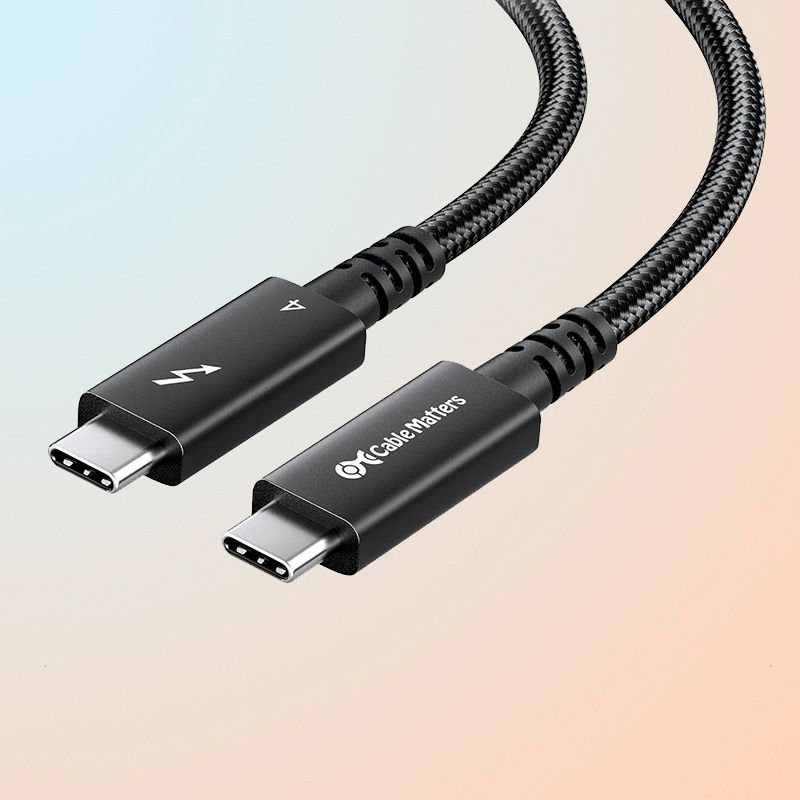
Cable Matters / Pocket-lint
Cable Matters Thunderbolt 4 6.6FT Cable
Best braided cable overall
The Cable Matters Braided Thunderbolt 4 cable is a great cable for just about any use case. It supports 100W charging via USB Power Delivery (PD) and data transfer speeds of up to 40Gbps. It’s also compatible with older USB-C protocols, so this cable should work on any gadget with the port. It only comes in one color and one length, but two meters should be enough for most people.
-
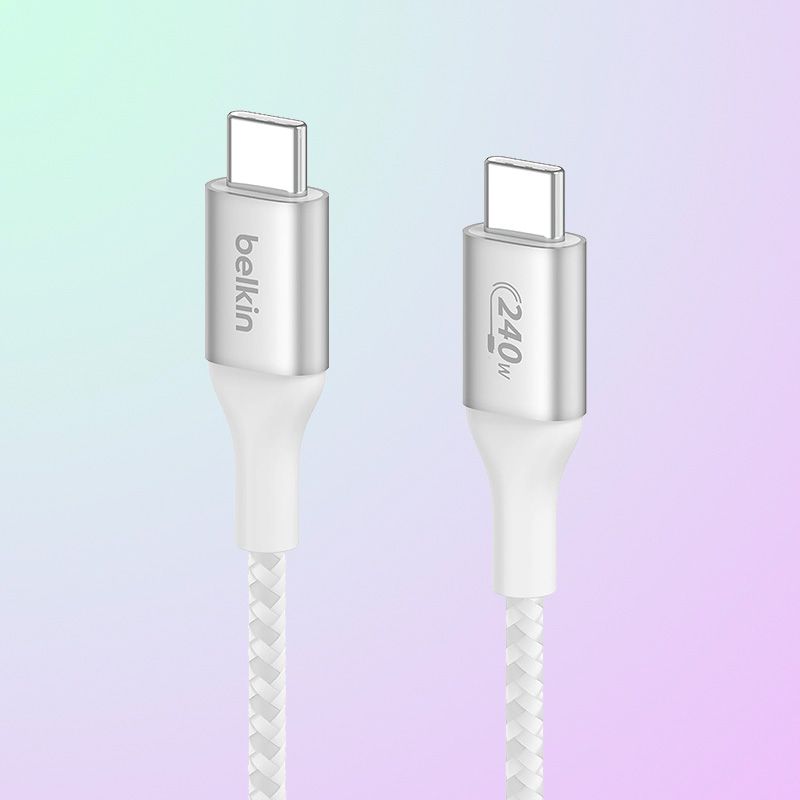
Belkin / Pocket-lint
Belkin BoostCharge USB-C to USB-C
Best for USB Power Delivery
The Belkin BoostCharge USB-C to USB-C cable is among your best bets for USB Power Delivery. It boasts a rating of up to 240W, which means you can use this cable to charge just about anything, and you’ll get the maximum amount of power. It’s usable as a data cable as well, provided you’re okay with USB 2.0 speeds. It’s USB IF certified, which is always preferred, especially with this much power.
-
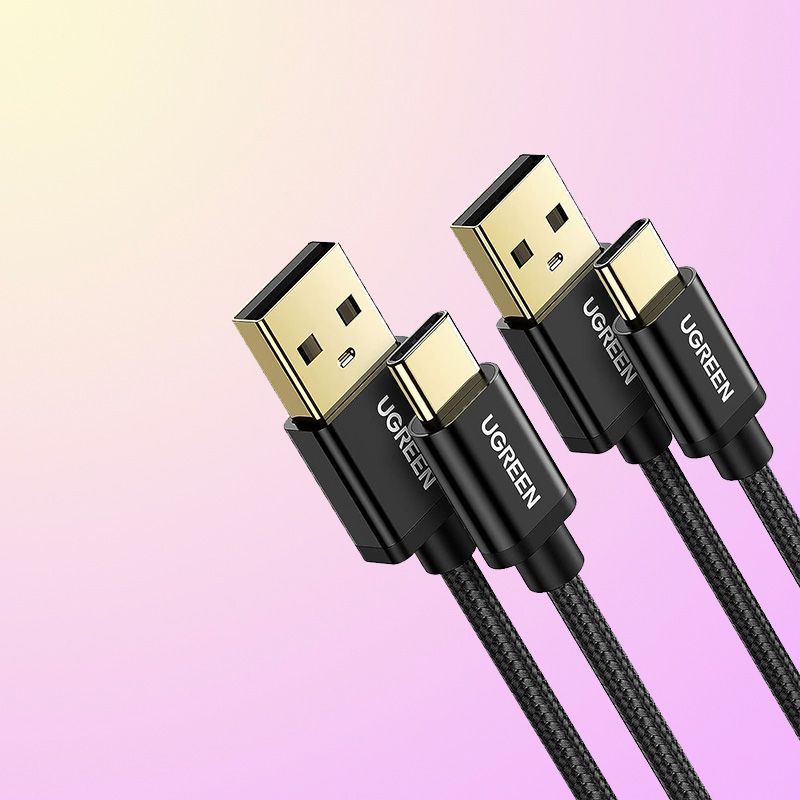
UGREEN / Pocket-lint
UGREEN USB C (2-pack)
Best USB-C to USB-A
$7 $11 Save
$4UGREEN’s USB-C to USB-A cables are a good choice for using older wall chargers. This is best used as a charging cable but can do data transfers as well. The cables support charging up to 18W and 480Mbps data transfers, which is USB 2.0 spec. The one we’re recommending comes in a two-pack for just over $10 when it’s not on sale, which also makes it a good bargain.
-
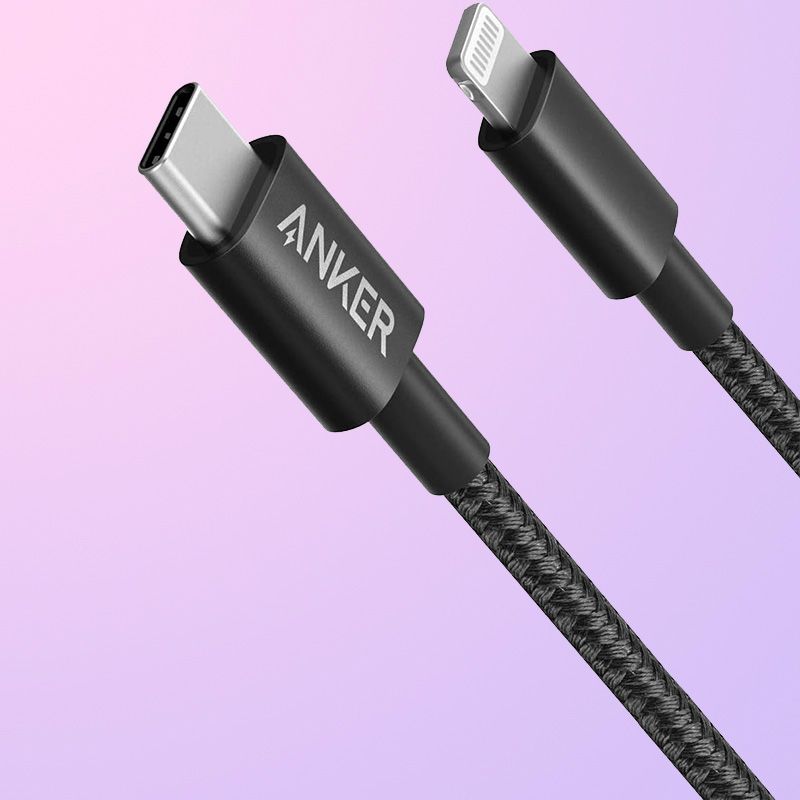
Anker / Pocket-lint
Anker iPHone Fast Charging Cable
Best USB-C to Lightning cable
$11 $12 Save
$1The Anker iPhone Fast Charging Cable is a good bet for older iPhones. It lets you connect your iPhone to a USB-C wall charger, which helps you reuse wall chargers that still work. This one is MFi certified to work with Apple devices, which is more than many others can say. The cable also comes in four lengths across four colors, and there’s a two-pack available if you need multiple.
-
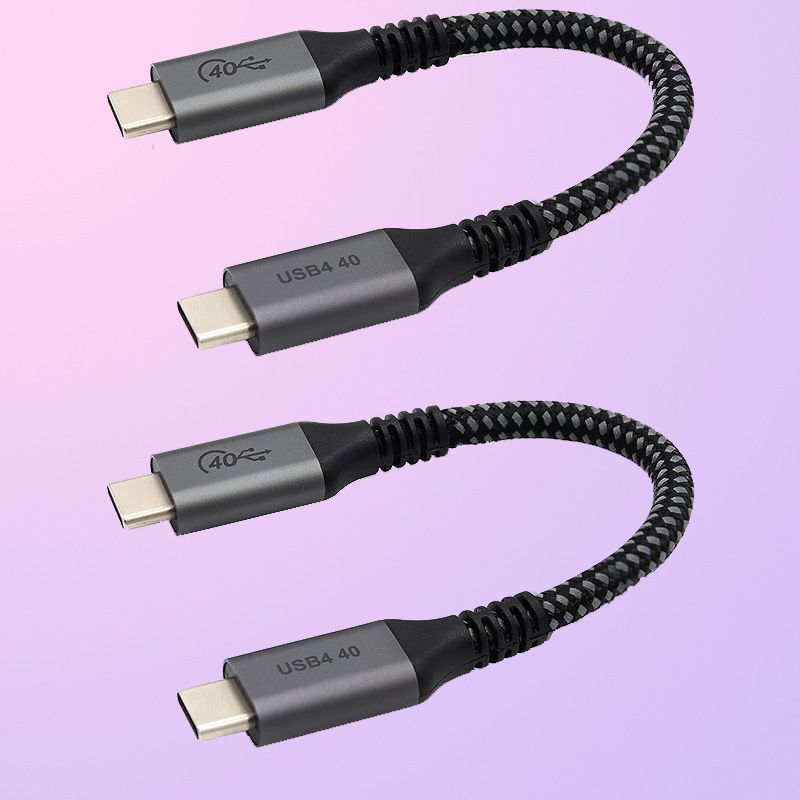
Vebner / Pocket-lint
Vebner 6-inch Thunderbolt 4 Cable
Best short cable
For short cable enthusiasts, the Vebner Thunderbolt 4 cable is an excellent choice. It comes in at a mere six inches long while still giving you Thunderbolt 4 functionality. That includes 40Gbps data transfer speeds with compatibility for older USB standards. It also offers up to 100W of USB PD. The two-pack is a bit more expensive, but it’s cheaper per cable to buy two rather than just one.
-
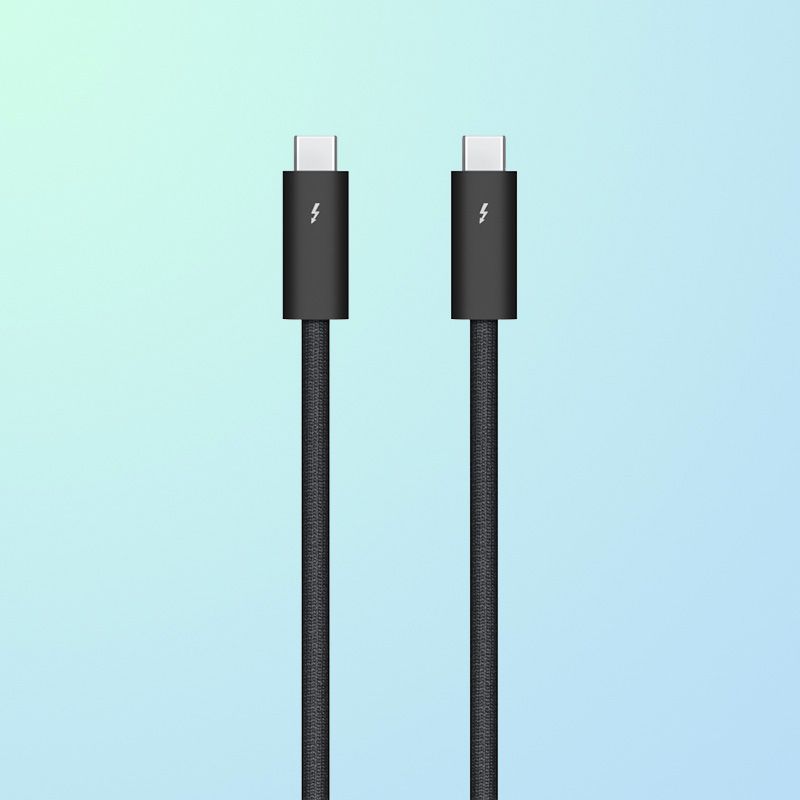
Apple / Pocket-lint
Apple Thunderbolt 4 Pro cable
Best long cable
Apple’s Thunderbolt 4 Pro cable is among the longest Thunderbolt 4 cables you can buy. Most of the rest of them don’t come any longer than two meters, but this one goes out to three meters, which is about 10 feet. You’ll pay a pretty hefty fee for the privilege, but that’s the price of super-long Thunderbolt 4 cables. It supports the 40Gbps and 100W spec of Thunderbolt 4.
-
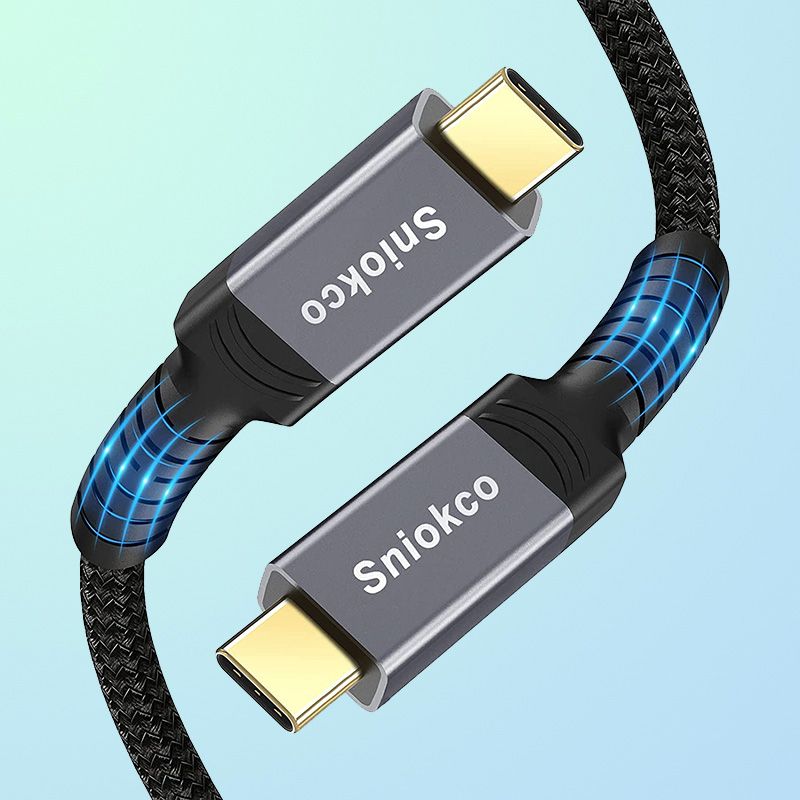
Sniokco / Pocket-lint
Sniokco Thunderbolt 4 cable
Best budget cable
$10 $12 Save
$2Sniokco Thunderbolt 4 is among the cheapest Thunderbolt 4 cables you can buy. It comes in five different sizes, and the most expensive of them is $14.99 for the two-meter variant. The shortest, which is 1.6 feet, is $9.99. They support Thunderbolt 4 spec, including the 100W power delivery and 40Gbps speeds. You won’t find many Thunderbolt 4 cables cheaper than this and there is a such thing as too cheap.
-
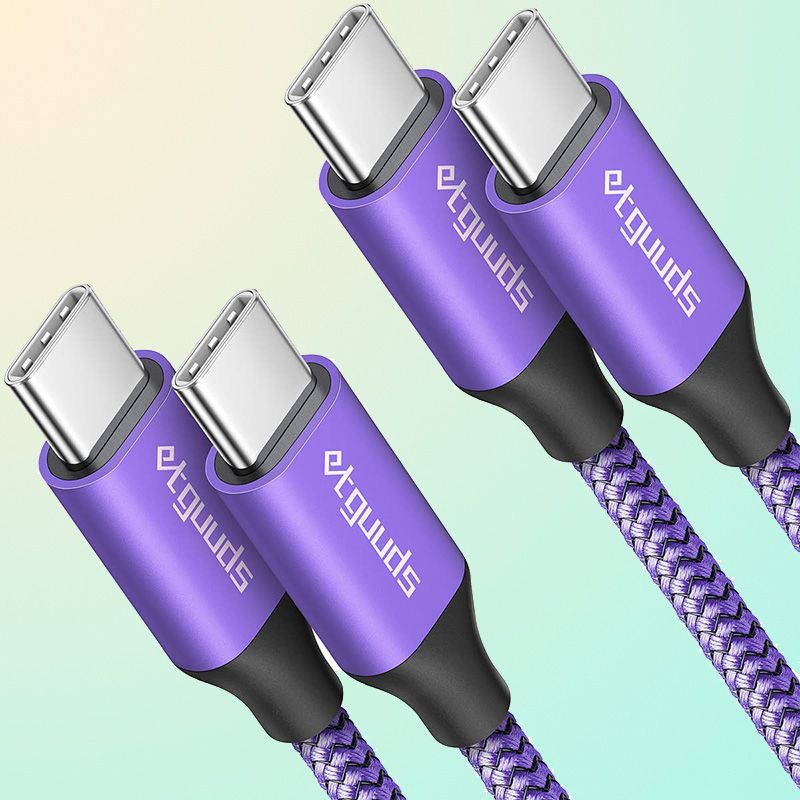
etguuds / Pocket-lint
etguuds USB-A to USB-C Braided Cable
Best color options
$6 $8 Save
$2The etguuds USB-C to USB-C cable is a nice option if you’re looking for something colorful. They support up to 60W fast charging and 480Mbps data speeds, which is good enough for most use cases. The cables are also fairly cheap at under $10 for a two-pack. They come in eight different colors and four different lengths. Be warned, though, that not every color comes in every length.
The best braided USB-C cables: Which one is best for you?
You can honestly use any of the USB-C cables on the list above, and you should be okay. The Cable Matters Thunderbolt 4 cable is the best overall option. It’s a reasonable length and has every feature possible for a USB-C cable. It’s expensive but a good option for someone who doesn’t want to second guess their decision. It’ll do everything.
For those looking for superfast charging speeds, the Belkin BoostCharge is your best bet with its 240W of power delivery. Obviously, your charger and device need to support charging that fast to actually get it, but Belkin will ensure you do. Other than that, it’s just finding a cable that’ll connect device A to device B, and you’re on your way.
What are the benefits of braided cables over regular cables?
It is mostly a matter of preference. Rubber cables tend to be cheaper, less stuff, but also less durable. Braided cables are more still, tend to be more durable, and are a bit more expensive on average. The material choice doesn’t affect performance in any noticeable way. It really just depends on what you’re looking for. There are even other types of materials, like liquid silicon, which is even less stiff than rubber while being about as durable as braided cables. However, they are less common.
How can you tell if a USB-C cable is safe to use?
There are a few ways to tell. USB.org has a certification process that ensures a cable meets the minimum standards of USB-C. They have a list of cables that have passed that standard, so that’s a good place to start. Inclusion on that list doesn’t ensure high quality, but it does ensure that the cables are made to spec in terms of wiring and performance.



